Level measurement is an essential part of quality and process control in many industries. There are various level measuring techniques used globally and level measurement using radar technology is one of them. This article further discussed this technique in details.
What is Level Measurement using Radar level measurement Technique?
The basic working premise of any radar instrument is by transmitting electromagnetic radiation (in GHz) of high frequency and then synchronizing the time of transit to and from the surface. In the case of the level measurement, the
radar level transmitter technology is used to determine the levelness of the surface.
Level measurement devices using radar technique is similar in principal to the ultrasonic level transmitters which use sound waves. But,
radar level gauge have an advantage over the ultrasonic level meter counterparts. Since sound waves are mechanical energy using atmospheric molecules to transmit, even the slightest chemical changes in the surrounding atmosphere causes the speed of transmission to vary. A classic example is how vapors change the speed of sound and results in erroneous readings.
Types of Radar Level Instruments
There are two types of
radar level measurement instruments as listed below.
a) Non Contact Type Radar level transmitter
In this type of instrument, the electromagnetic signal is emitted by an antenna in to the air. It reaches the surface of the liquid and then is reflected back to the instrument, which then reads it.
An issue with this type of radar level measurement is that the output of the antenna is quite weak, usually about 1mW. And after being transmitted to the air, this signal weakens further. Moreover, the strength of the reflected signal depends on the dielectric constant of the fluid. In some cases like hydrocarbon fluid (very low dielectric constants) the signal received back by the transmitter can be as low as 1% in intensity of the original signal. The radar signal can be further dissipated if the fluid is turbulent or has foam in it.
b) Guided Wave Type radar level transmitter
The guided wave type radar level instrument works on 'Time Domain Reflectometer (TDR)' technology. It uses a probe to transmit the electromagnetic impulses to the surface of the liquid. The dielectric constant of the liquid must be higher than that of surrounding air for the signal to be reflected back o the transmitter.
The transit time is then electronically measured using a precise and high-speed timing circuit and the liquid level is calculated from that. In the guided type level instrument, the transit time remains same for fluids with different dielectric constants. What changes is the strength of the signal received back and by combining both the data, the level of the liquid is determined. So, for example, the transit time for a liquid with hydrocarbon that has a dielectric constant of 2-3 will be same as that of water with a dielectric constant of 80; only the signal received will be weaker.
Another aspect is that the output of power from the radar probe is just 10 percent of that of the non contact type. This is because the physical probe ensures that the signal reaches the surface of ht liquid and gets reflected back with minimal losses. This allows the guided wave type device to measure the levels of liquids with dielectric constants as low as 1.7. In fact, changes in the dielectric constant have negligible impact of the device performance.
And finally, this device does not require any calibration because the speed of light remains constant . It only requires field configuration which is done by inputing specific data for the particular level application it is being used for. This allows you to configure a number of devices in a short period by using the particulars of individual process tanks. The devices operate on a 24 Vdc power source.
Pros and Cons
Advantages are as follows-
Radar level transmitters has no physical contact required,Accuracy is high. Suitable for plastic tanks
A couple of disadvantages are-
Costlier compared to other techniques.Unable to measure levels between two interfaces.
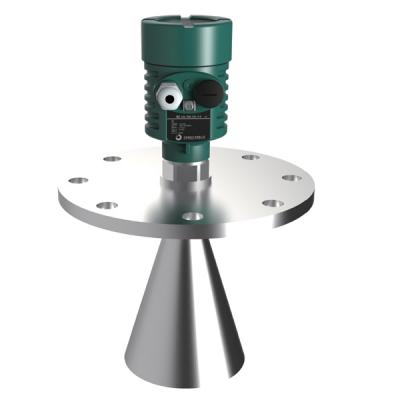 6.8GHz Pulse Radar Level Instrument2017/04/27SKRD50 series radar level transmitter adopts 6.8GHz transmission frequency technology; it is a kind of non-contact and continuous level measurement device. SKRD 50 series radar level transmitters output 4-20mA analog signals;VIEW
6.8GHz Pulse Radar Level Instrument2017/04/27SKRD50 series radar level transmitter adopts 6.8GHz transmission frequency technology; it is a kind of non-contact and continuous level measurement device. SKRD 50 series radar level transmitters output 4-20mA analog signals;VIEW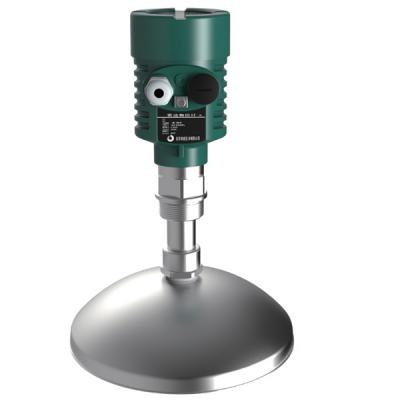 26GHz Pulse Radar Level Instrument2017/04/27SKRD90 series radar level transmitter is designed to be used as non-contact and continuous level measurement instruments of liquids pulps and bulk solids.VIEW
26GHz Pulse Radar Level Instrument2017/04/27SKRD90 series radar level transmitter is designed to be used as non-contact and continuous level measurement instruments of liquids pulps and bulk solids.VIEW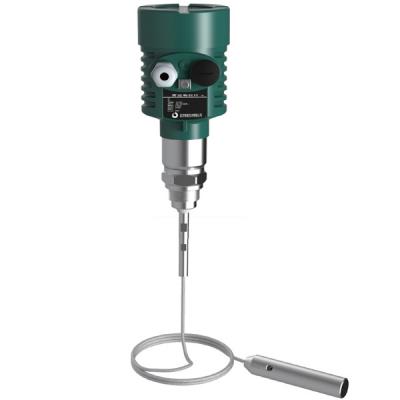 Guided Wave Radar Level Transmitter2017/04/27High frequency microwave pulses travels along the detecting component(steel rope or rod)and reflects when veaching the product surface.The time from emission to reception is proportional to the distan...VIEW
Guided Wave Radar Level Transmitter2017/04/27High frequency microwave pulses travels along the detecting component(steel rope or rod)and reflects when veaching the product surface.The time from emission to reception is proportional to the distan...VIEW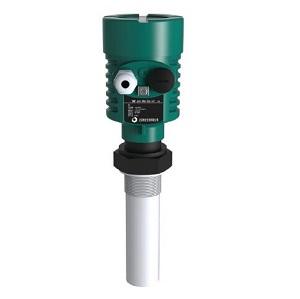 SKRD91 series Radar level transmitter2019/08/29Application: Highly erosive and corrosive liquids level measurementMax range: 20mProcess connection: Screw, flangesProcess temperature: -40~120°CProcess pressure: -0.1~0.3MpaAccuracy: ±5mmFrequency ...VIEW
SKRD91 series Radar level transmitter2019/08/29Application: Highly erosive and corrosive liquids level measurementMax range: 20mProcess connection: Screw, flangesProcess temperature: -40~120°CProcess pressure: -0.1~0.3MpaAccuracy: ±5mmFrequency ...VIEW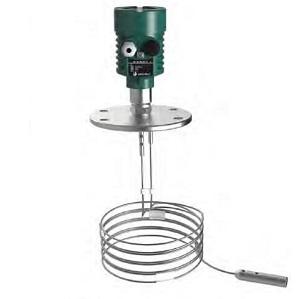 SKRD33 Series Radar level instruments2019/08/30Application: bulk solids level measurementMax. range: 30mProcess connection: Screw, flangesProcess temperature: -40~250°CProcess pressure: -0.1~2.0MpaAccuracy: ±3mmRepeatability: ±2mmFrequency ran...VIEW
SKRD33 Series Radar level instruments2019/08/30Application: bulk solids level measurementMax. range: 30mProcess connection: Screw, flangesProcess temperature: -40~250°CProcess pressure: -0.1~2.0MpaAccuracy: ±3mmRepeatability: ±2mmFrequency ran...VIEW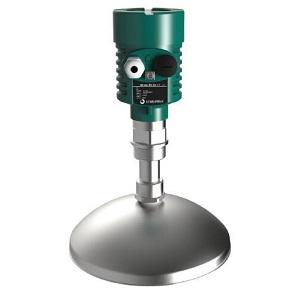 SKRD94 series radar level meter2019/08/29Application: Strong dew/dusty/crystal solid/powder level measurement Max. range: 70mProcess connection: Screw, flangesProcess temperature: -40~240°CProcess pressure: -0.1~4.0MpaAccuracy: ±15mmFreque...VIEW
SKRD94 series radar level meter2019/08/29Application: Strong dew/dusty/crystal solid/powder level measurement Max. range: 70mProcess connection: Screw, flangesProcess temperature: -40~240°CProcess pressure: -0.1~4.0MpaAccuracy: ±15mmFreque...VIEW